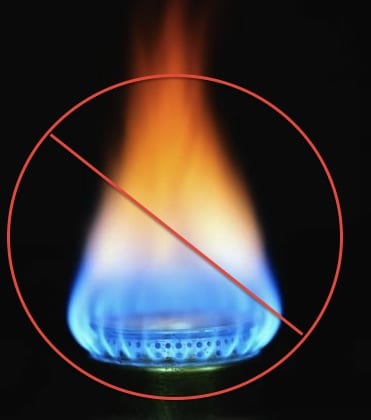The golden age of gas is already over – eaten by solar and wind and its own soaring costs. AEMO says gas-fired production could fall by two thirds over the next five years, as export parity prices it out of market and it is displace by renewables. The one bright spot might be the potential of gas to replace coal generation in a decade’s time.
So much for the “golden age of gas”. The Australian Energy Market Operator predicts that gas-fired generation in this country will be almost obliterated over the next five years, falling by two thirds as export parity prices it out of the electricity market, and as renewables such as wind and solar take a greater share.
AEMO is forecasting dramatic falls in the amount of gas-fired generation in the country’s electricity market, with falls of up to 27 per cent predicted in some states. In its first gas forecasting analysis – says overall gas production in Australia will rise because of the LNG export boom in Queensland. But the price surge that this has caused means domestic gas consumption (including in homes and businesses) will fall by at least 5.2 per cent a year, and gas-fired generation will fall at least 16.8 per cent a year.
 In some states, the fall in gas-fired generation will be up to 27 per cent a year of soaring gas prices and competition with renewables. In Tasmania, gas-fired generation could virtually disappear altogether. In South Australia, it will also fall dramatically despite a high reliance on wind and solar.
In some states, the fall in gas-fired generation will be up to 27 per cent a year of soaring gas prices and competition with renewables. In Tasmania, gas-fired generation could virtually disappear altogether. In South Australia, it will also fall dramatically despite a high reliance on wind and solar.
Just a few years ago, the energy industry was predicting a “golden age” of gas, which they said would be the main transition fuel from coal to renewables. This prompted a huge rush of investment in gas-fired generation, which has been the main cause of the current over-capacity in Australia (and not renewables as some suggest). See table above, base-load gas is the red, peaking gas is the green. Together, they add up to more than half the capacity added in those five years.
But these new generators are already being sidelined. AGL is closing nearly one half of its Torrens Island gas-fired generator in South Australia, Origin has relegated its new Darling Downs base-load generator into an occasional peaker, Stanwell is going to mothball gas capacity, and EnergyAustralia is taking write-downs on its gas-fired portfolio.
The change has been prompted by several developments – the Abbott government’s removal of the carbon price, which makes coal more attractive, the soaring price of gas, and the massive rollout of rooftop solar PV, which has stolen much of the high-priced generation peaks that used to underwrite gas generation (and the revenues of many of the coal-fired generators too).
 Under AEMO’s low case scenario, the fall in gas-fired generation may be even more dramatic, an average 18.8 per cent decline over the next 5 years. This would take total production to just 70.5 petajoules, a fall of 65 per cent from current levels.
Under AEMO’s low case scenario, the fall in gas-fired generation may be even more dramatic, an average 18.8 per cent decline over the next 5 years. This would take total production to just 70.5 petajoules, a fall of 65 per cent from current levels.
In South Australia, an interesting case because of its high levels of variable wind and solar – currently at 40 per cent and tipped by many to increase dramatically in coming years – gas production has already fallen by more than 10 per cent over the last three years.
AEMO says this is because of the “increased rooftop PV uptake, and commissioning of new wind farms”, which have reduced the dispatch of gas generation plant in the NEM (National Electricity Market).
It sees another halving in gas-fired generation over the next five years in that state because of “rising forecast gas prices which reduces the competitiveness of GPG plant in the NEM. This includes the withdrawal of a Torrens Island GPG plant from 2017.”
If overall energy consumption is at the low end of forecasts, gas-fired generation could fall by another third, even as more coal-fired generators are taken out of the market.
In Victoria, the amount of gas-fired generation in place in a decade’s time will depend on electricity consumption and the retirements of coal plants
“Lower electricity consumption results in substantially more modelled retirement from existing brown coal-fired power stations (2,500 MW compared to 300 MW in the medium scenario).”
In Tasmania, gas-fired generation may disappear entirely, with the mothballing of the Tamar Valley station. Already, since 2010, Tasmanian gas fired generation has declined by 12.2 per cent a year from 11.4PJ. In one scenario, it may fall another 64 per cent year to a negligible 0.4PJ by 2019.











